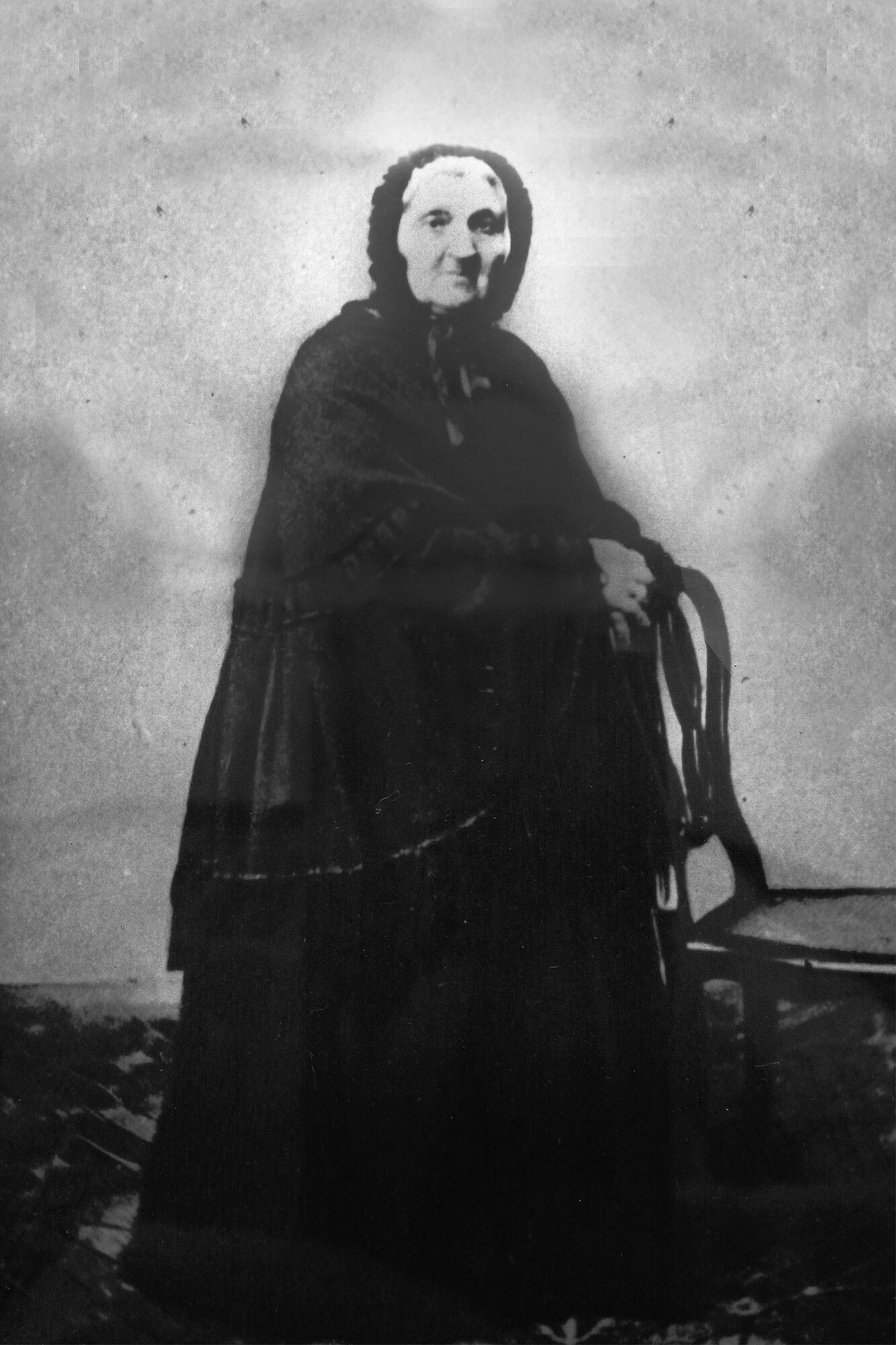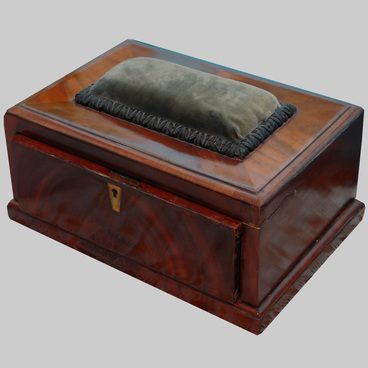This photograph shows Olga Semenovna Zaplatina, wife of Sergey Timofeevich Aksakov. Her father, Semen Grigorievich Zaplatin, was a famous general of the Suvorov era, and her mother, Igel-Syuma, was a princess from a noble dynasty of Turkish emirs who took their lineage from the Islamic prophet Mohammed and had the exclusive right to wear a green turban. General Zaplatin had married her for her astonishing beauty. Igel-Syuma shared her husband’s hardships in constant campaigns. During one of them, in Poland on March 1, 1793, they had a daughter, Olga.
Igel-Syuma passed away early, and Zaplatin and his daughter settled in Moscow. He spent a lot of time with her and tried his best to fill in for her mother, bringing up Olga in the spirit of military valor and reading historical and military literature with her. Fresh newspapers were regularly delivered to their house, so the Zaplatins had always been well aware of what was going on in the world around them. At a mature age, Olga became a close friend and assistant to her father.
Sergey Aksakov married Olga Zaplatina in 1816. They had 14 children, but 4 of them died almost immediately after birth, and their son Mikhail lived only till he was 17. Aksakov warmly loved his wife and would often affectionately call her “Ollina”. Many contemporaries considered the Aksakov family a model, largely due to its sympathetic, calm and reserved nature.
Olga Semenovna spent a lot of time and effort helping all family members maintain the closest and most respectful relationships with each other, and her tact and compassion also extended to the family friends. With the help of her husband, she was able to develop the talents of their children, as well as bring up civil dignity in them. “Aksakov”s children grew up in a patriarchal life, with strong old customs, close to the people, surrounded by legends and stories of the past, in the beauty of rural nature, ” — this is how Soviet literary critic Nikolai Brodsky described the atmosphere in the family estate of the Aksakovs in the village of Nadezhdino.
Thanks to her intelligence, education and exceptional kindness, Olga became one of the closest confidants to her husband. Without any doubt, Aksakov engaged her in all his official and literary affairs. She would often become the first reader of his works, as well as the first critic and advisor.
Igel-Syuma passed away early, and Zaplatin and his daughter settled in Moscow. He spent a lot of time with her and tried his best to fill in for her mother, bringing up Olga in the spirit of military valor and reading historical and military literature with her. Fresh newspapers were regularly delivered to their house, so the Zaplatins had always been well aware of what was going on in the world around them. At a mature age, Olga became a close friend and assistant to her father.
Sergey Aksakov married Olga Zaplatina in 1816. They had 14 children, but 4 of them died almost immediately after birth, and their son Mikhail lived only till he was 17. Aksakov warmly loved his wife and would often affectionately call her “Ollina”. Many contemporaries considered the Aksakov family a model, largely due to its sympathetic, calm and reserved nature.
Olga Semenovna spent a lot of time and effort helping all family members maintain the closest and most respectful relationships with each other, and her tact and compassion also extended to the family friends. With the help of her husband, she was able to develop the talents of their children, as well as bring up civil dignity in them. “Aksakov”s children grew up in a patriarchal life, with strong old customs, close to the people, surrounded by legends and stories of the past, in the beauty of rural nature, ” — this is how Soviet literary critic Nikolai Brodsky described the atmosphere in the family estate of the Aksakovs in the village of Nadezhdino.
Thanks to her intelligence, education and exceptional kindness, Olga became one of the closest confidants to her husband. Without any doubt, Aksakov engaged her in all his official and literary affairs. She would often become the first reader of his works, as well as the first critic and advisor.



